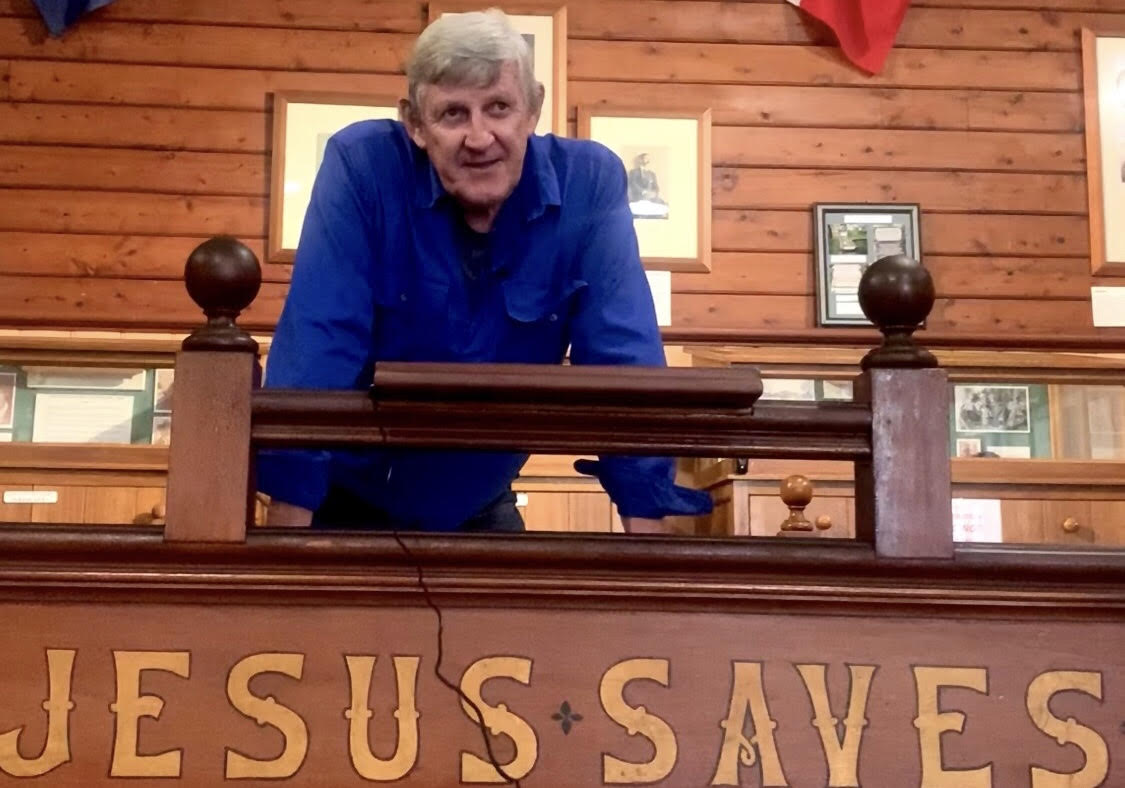|
I’m headed out to Bourke for a wake this weekend. It’s to celebrate someone I consider an old friend – Henry Lawson. I’ve walked in the poet’s steps for four decades all across the Western plains, so I feel it’s right to go back to remember him.
Professor John Barnes came on one of our Poets Treks and it rekindled his long-term interest in Henry. He wrote later, “It is no exaggeration to say that his one and only stay in what he and other Australians called the ‘Out Back’ was crucial to his development as a prose writer. Without the months that he spent in the northwest of New South Wales, it is unlikely that he would ever have achieved the legendary status that he did as an interpreter of ‘the real Australia’.”
0 Comments
The scene is a small house set between the sea and the Australian bush. Picture a lone man wrestling in prayer between tall, white gumtrees in the moonlight. It’s 1953 and the country is just beginning to recover from the battering of war. The forty-two-year-old Methodist minister’s name is Alan Walker and he’s full of fear at setting out on a nation-wide mission. His convict ancestor had arrived in Botany Bay in 1810 and 20 years later, through the preaching of a travelling Methodist, his alcoholic son John decided to follow Jesus and began preaching in the Windsor district with powerful effect.
And now his great-great grandson Alan - the thirteenth evangelist from that line – is praying for strength. A sudden rustling of the gum leaves in the night-wind made his spirit soar. A vivid image of Jesus challenging Rabbi Nicodemus to allow the wind of the Holy Spirit to flow through his life, gave the shrinking preacher the courage he needed to undertake the preaching ministry to his native country, half a world away from Israel. His preaching had a powerful effect – just as his great-great grandfather John Walker’s had in Windsor 150 years previously. Decades later, Labor parliamentarian Bill Hayden dubbed Alan Walker, ‘The Conscience of the Nation.’ Others called him ‘Mr Methodist.’ What did that mean? A few rotting timbers are all that remain of a shipyard where the three-masted barque Royal Tar was built from local timber in 1873. I stumbled across the story walking along the Nambucca River in Northern NSW and the name rang a bell with me. It called back to mind a strange tale about an idealistic union man called William Lane recruiting bush workers in Bourke to join him in creating a Utopian settlement - in Paraguay of all places!
And here I was standing on the birthplace of the same Royal Tar that carried this Australian ‘Moses’ 10,000 km across the Pacific and round Cape Horn to build a ‘new Australia’. |
AuthorJoin The Outback Historian, Paul Roe, on an unforgettable journey into Australia's Past as he follows the footprints of the Master Storyteller and uncovers unknown treasures of the nation. Archives
October 2023
Categories
All
|
|
Sponsored by
|
Privacy Policy
|
|
Copyright 2020 by The Outback Historian
|
Site powered by ABRACADABRA Learning
|




 RSS Feed
RSS Feed

